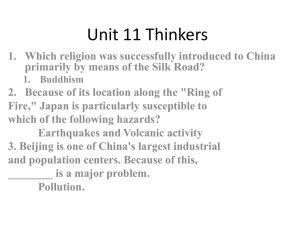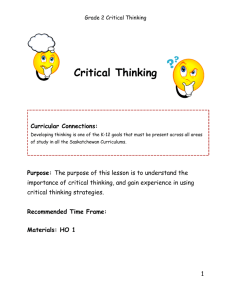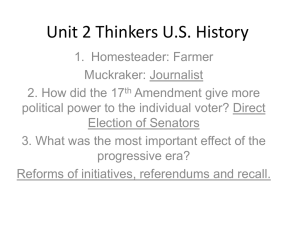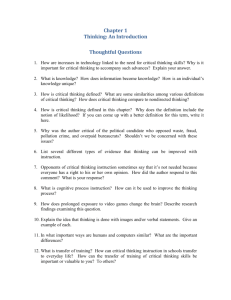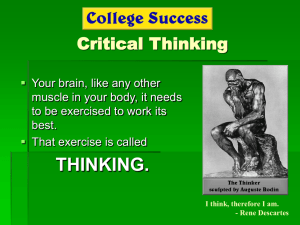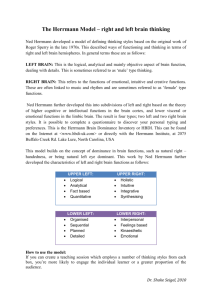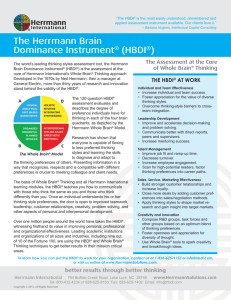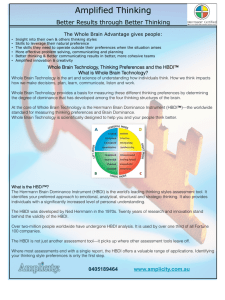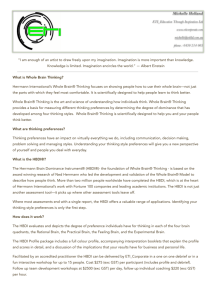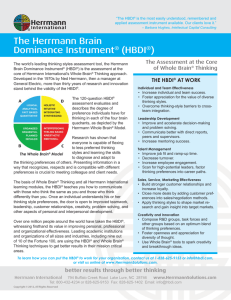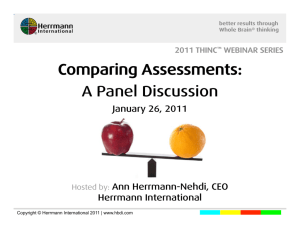Handout 1: What`s Your Thinking Style
advertisement
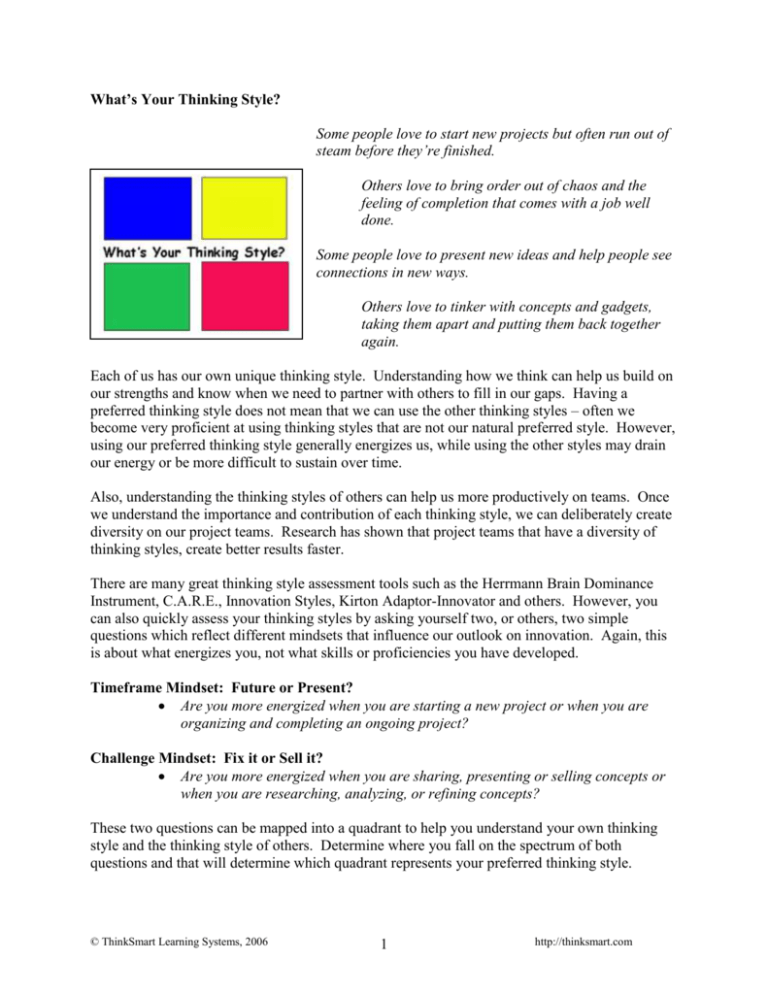
What’s Your Thinking Style? Some people love to start new projects but often run out of steam before they’re finished. Others love to bring order out of chaos and the feeling of completion that comes with a job well done. Some people love to present new ideas and help people see connections in new ways. Others love to tinker with concepts and gadgets, taking them apart and putting them back together again. Each of us has our own unique thinking style. Understanding how we think can help us build on our strengths and know when we need to partner with others to fill in our gaps. Having a preferred thinking style does not mean that we can use the other thinking styles – often we become very proficient at using thinking styles that are not our natural preferred style. However, using our preferred thinking style generally energizes us, while using the other styles may drain our energy or be more difficult to sustain over time. Also, understanding the thinking styles of others can help us more productively on teams. Once we understand the importance and contribution of each thinking style, we can deliberately create diversity on our project teams. Research has shown that project teams that have a diversity of thinking styles, create better results faster. There are many great thinking style assessment tools such as the Herrmann Brain Dominance Instrument, C.A.R.E., Innovation Styles, Kirton Adaptor-Innovator and others. However, you can also quickly assess your thinking styles by asking yourself two, or others, two simple questions which reflect different mindsets that influence our outlook on innovation. Again, this is about what energizes you, not what skills or proficiencies you have developed. Timeframe Mindset: Future or Present? Are you more energized when you are starting a new project or when you are organizing and completing an ongoing project? Challenge Mindset: Fix it or Sell it? Are you more energized when you are sharing, presenting or selling concepts or when you are researching, analyzing, or refining concepts? These two questions can be mapped into a quadrant to help you understand your own thinking style and the thinking style of others. Determine where you fall on the spectrum of both questions and that will determine which quadrant represents your preferred thinking style. © ThinkSmart Learning Systems, 2006 1 http://thinksmart.com The following descriptions are brief overviews to help you understand the different styles. Remember these are descriptions of what energizes you … it is not a description of who you are. Blue Thinkers are always looking for problems to solve. They like to deal with facts and quantitative data. They tend to be more objective and logical than Yellow thinkers and more future oriented than their neighboring Green thinkers. Strength: problem solving. Weakness: process and relationship-building communication. Green Thinkers love bringing order out of chaos and making processes better. They like to deal with objects and reality and tend to be more practical and concrete than Red Thinkers and better at finishing tasks than Blue Thinkers. Strength: order and process. Weakness: knowing when to let go and communicating benefits. Red Thinkers thrive on sharing and presenting information in a way that leads to a natural close of a deal or a project. They are more focused on putting current projects and information out into the world than their Green Thinker neighbors and less interested in developing new concepts than Yellow Thinkers. Strength: collaborative selling. Weakness: bullet proofing concepts and reading the world. Yellow Thinkers love finding new possibilities and exploring the world. They tend to see the big picture and synthesize information but find it more difficult to handle final details than the neighboring Red Thinkers and more apt to overlook important facts or flaws than the Blue Thinkers. Strength: embracing change. Weakness: shooting from the hip and follow-up. More Information: Innovation Styles – How do you express your ability to be creative and innovative? Is your style Visioning, Exploring, Experimenting or Modifying? For more informatio about this assessment, go to: http://innovationstyles.com Herrmann Brain Dominance Instrument – Originally developed by Ned Herrmann, the HBDI is one of the oldest and most validated assessment tools available. For more information, go to: http://www.hbdi.com. © ThinkSmart Learning Systems, 2006 2 http://thinksmart.com Diversity Game – Ted Coulson and Alison Strickland with Applied Creativity, Inc. have developed a fun group activity based on the HBDI. For more info: http://www.appliedcreativityinc.com/book_diversity.html Innovate with C.A.R.E. Profile – This profile identifies the natural team role of different thinking styles – Creator, Advancer, Refiner, Executor. More info at: http://www.norquestlearning.com/product_detail.asp?sku=AA-C-063 Kirton Adaptor-Innovator (KAI) – Developed by Michael Kirton based on a model that states that people have a natural tendency towards either adaptation or innovation. For those of you who like to use the Myers-Briggs Type Indicator, here’s a good article that matches the MBTI with the KAI – http://www.tri-network.com/articles/kaimbti.html © ThinkSmart Learning Systems, 2006 3 http://thinksmart.com
